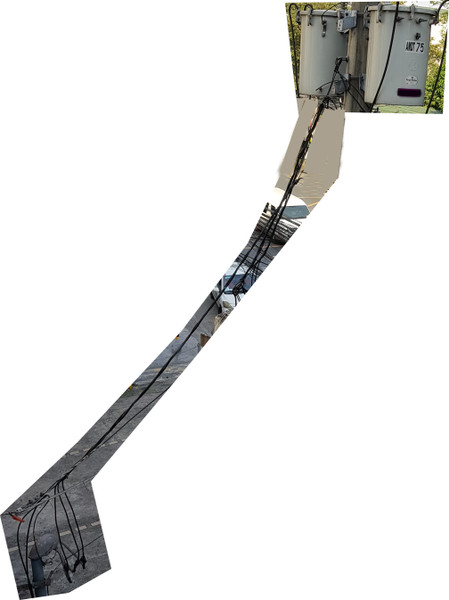After going through all these tangents-- the title is not appropriate to be called science anymore . . . let alone considered to be
(above text cut because I was warnt: "The text that you have entered is too long (22989 characters). Please shorten it to 10000 characters long.")
About the science and engineering part. I was discussing with someone at an arc flash forum resource site who replied me in long detailed responses. I learnt a lot about "how it started, how it can be prevented and what the contributing factor that led to it, would be worth the time spent.". This is the reason I don't ask about them here because people are not focusing on the science part and i'm getting answers in the other site. Anyway, here's the reply of that person that address most of your questions or the science and engineering part of it which I'm really more interested in:
HOW IT STARTED:
(Everything that follows are quotes of the arc flash expert taken in my conversations I found relevant. You can go directly at the following site to read all the gory details. https://brainfiller.com/arcflashforum/viewtopic.php?f=2&t=4873
"There are two different issues here. Contamination is sort of quantified in a very non-qualitative way in IEEE 516 where the evidence for this is documented. It's not very strong. Repeated incidents of tracking will eventually result in a fault but there's no definition of what is too bad. Eventually you get effects like dry banding, corona discharges, etc., which eventually result in a power arc. In NFPA 499 for instance referring to dust explosion problems such as coal they give a figure of 1/32 inch thickness and claim that this is when you can no longer see a white painted background clearly as a good indicator of when it is too thick.
As to vaporizing and such, what? That's not really what we're talking about here. It's conductive or semi-conductive materials that form surface partial discharges...basically bridging regions of high dielectric with low (or basically zero) ones causing increased voltage stress on the high dielectric regions resulting in insulation breakdown which causes the growth of what are called electrical trees which grow over time until a flashover occurs. Carbon vapor is not a necessity for this to occur...simple presence is all it takes. Google "partial discharge", "dry banding", "critical flashover voltage", "voltage stress", etc.
The concern with dropped tools is that it's a conductor. Simple as that."
"you do NOT need any kind of previous damage of any kind in an actual arc flash. What typically happens is that we get an arc from line to ground which is what you had. Then this heats up the surrounding air. As air temperature goes up as with most substances (except carbon) the insulation properties go down. Thus within typically 1-2 cycles of an arc flash the surrounding air heats up to the point that it jumps from one terminal to the next and we get a full on 3 phase (or single phase in your case) arc flash regardless of how it started. Barriers, insulation blocks, etc., often have little to no effect as far as isolation goes. From a forensic point of view one of the tell tale signs is looking specifically for damage from a ground fault since once the arc flash gets going it usually has very little interaction with grounded surfaces after that except if you get A-enclosure-C arcing.
Carbon is not "deposited". If insulation is damaged the chemical results are water, CO2, etc., when hydrocarbons completely burned but you get soot and ash with incomplete burning and noncombustible materials such as fillers. The remaining material (the "carbon" as you called it) is a semiconductor. It has no electrical insulating properties whatsoever. Carbon "depositing" is something quite different. That's contamination. Just ask "smoke stack" industries (iron & steel, refineries, coal prep plants, mining, many chemical plants, wood plants, etc.) if it's a problem. The answer is a resounding yes. Routine cleaning of electrical gear is an absolute necessity for them in many cases. After damage NEMA standards among others are pretty clear: you remove and replace ALL damaged insulation, period. The previous repair was clearly improperly done based on the description.
To clear things up at low level voltages and currents we get streaming which is essentially nonvisible currents flowing across surfaces. As the surface becomes more contaminated or damaged, "glows", "sparks", St. Elmo's fire (corona discharges), etc. appear. Depending on the intensity these things can be mostly harmless. As the intensity increases we get progressively more energetic effects, and damage begins to ensue. It appears initially as a whitish powder residue and surfaces that are intended to be polished like insulators start to take on a dull appearance. Eventually the insulation turns black where it has burned completely leaving only a semiconductive ash and soot material behind. Whether white or black, the dielectric is compromised. Across the semi-conductive region whether it is due to contamination or insulation resistance, effectively the dielectric is ZERO and thus the voltage drop across this region is zero. The problem though is that we're dealing not with a 1 dimensional case like a wire but a 2D or maybe 3D problem. This sets up a situation where we have a much higher voltage flux (gradient) across the surrounding regions that are still intact and in parallel with the compromised region. Eventually this additional stress causes breakdown of the regions next to the compromised spot if the applied voltage across the insulation is high enough. This region is then damaged (oxidized/burns) which increases the size of the damaged area and puts yet more voltage stress on the remaining undamaged insulation. Physically the pattern is a Lichtenberg figure (frozen lightning) which is something that technicians look for with medium voltage which is a tell tale indication of an impending failure. The same thing still happens even at low voltages but the scales are drastically smaller.
Now going beyond this, there is no measurement of contamination or any sort of test to indication what is acceptable and what's not. At medium voltage (>1 kV) there is the "tin foil" test which is a performance test to verify whether or not the equipment clearances are sufficient, and there are hardly much in the way of UL standards for 600 V or less either. The equipment is wrapped in aluminum foil and then high potted to see if it leaks or arcs across the gaps. If it holds a high voltage (<1 mA leakage), it passes. However there is no NEC rule as to how much the minimum clearance distance should be. There is usually a good deal of "margin" built into terminal blocks though and as you are probably no doubt aware there is a lot of abuse out there. Electricians can do an absolutely horrendous job of routing and terminating cables at terminal blocks and still manage not to cause an arcing fault, particularly at 240 V. As you go up in voltage at 4160 respecting clearances is a much bigger deal. By the time you get to 7200 V if you even lay unshielded cables on a grounded surface you will get tracking and failures. At 15 kV and above, merely nicking some of the insulation when terminating the cable without smooth edges is all it takes to cause a failure. That's why you should be trained to do medium voltage terminations. At 240 VAC cleanliness is usually more of a matter of failures and overheating from being buried in dirt. But at medium voltage cleanliness is critical to safe operation so it is looked at very differently. But it is still instructive to understanding what happens at low voltages.
At low voltages equipment is rated and tested based on both the clearance (distance in air between two conductors) and creepage distance which is the linear distance from one conductor to another along a surface. Creepage distance is usually supposed to be at least twice the air distance as a rule of thumb. So with damage the air distance is probably hardly changed but the creep distance can quickly disappear."
(continued in next message because of 10,000 character limit)













